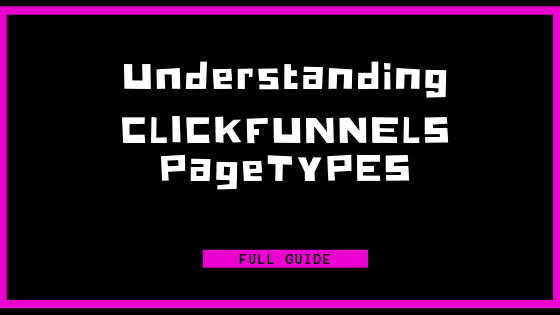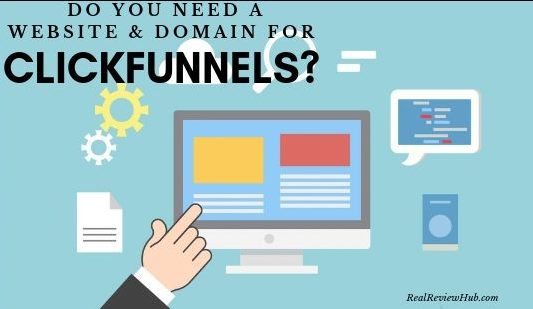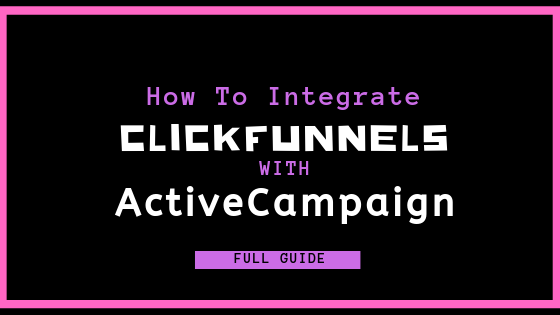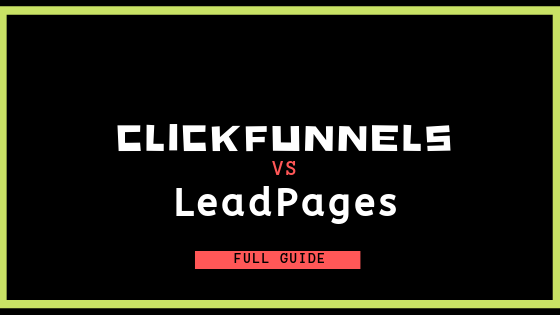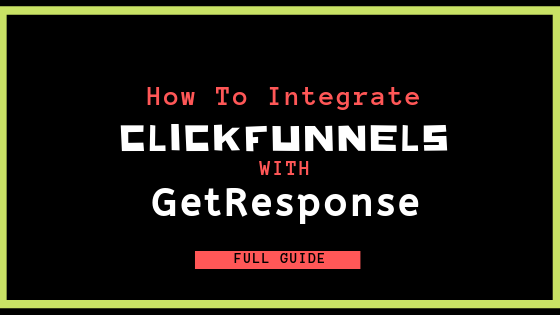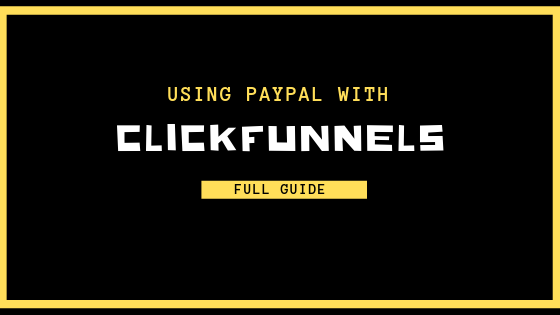Understanding ClickFunnels Page Type: A Guide for Beginners
How do you increase interest in your products and grow your online sales operation? If you have not heard of sales funnels yet, you should keep reading this article. I have learned through some quick research that the success of any online sales company may rest solely upon your ability to create a successful sales funnel.
Why is understanding a ClickFunnels Page Type so important? The page type concept is critical to understand. The 7 ClickFunnel’s page types are all utilized in different ways to drive leads and potentially turn them into customers.
“a sales funnel is a type of marketing strategy designed to turn people into interested customers who buy from you.”
The sales funnel is not exactly a brand new concept and came to be in the late 19th century when an ad agency called Elias St. Elmo Lewis created the idea. Today simple sales funnels have evolved into various forms online, and ClickFunnels is one of the very best places to turn if you are looking to create your own online sales funnels.
Different Types of ClickFunnels Pages
As stated, there are seven types of ClickFunnels page types. These are ClickPop Pages, Affiliate Pages, Sales Pages, Optin Pages, Miscellaneous Pages Webinar Pages, and Membership Pages. Each of these will be summarized below.
ClickPop Pages
- You need to use Click Funnels ClickPop Page because it will help you with pages via the incredibly useful ClickPop application.
- The purpose of ClickFunnels ClickPop is use on pre-existing websites or as an opt-in page for your own ClickFunnels page.
- The most common uses for this specific type of page are for social media as well as other previously existing pages that you have linked to your ClickFunnels account. You’ll want to use these ClickPop pages to capture leads and later on convert them into sales.
Affiliate Pages
- Click Funnels affiliate pages aim to provide a lead with a quick look of using the affiliate pages to help build your online business. We cover the two main pages associated with your affiliate account.
You will need to have these things:
- ClickFunnels 14 DAY FREE TRIAL
- A Product to Sell
- Backpack
- Backpack is a program connected to ClickFunnels that can help you to do a variety of tasks. These include organized commission plans, manage your affiliate pages, review your commissions, manage affiliate payments, and much more. Select the link above to learn more about the backpack program.
- When you are inside your funnel, you can create a new affiliate area from scratch by clicking on the add new step.
- From the drop-down menu, you will see the affiliate area. You have two types of pages you can create the field access will be the first page you want to give access to your affiliate.
- The second page would be affiliate access area. The second page is the page that the Affiliates can access their statistical information in links for promoting your offer.
Sales Pages
- The sales page is arguably the most critical component of any sales funnel. It can help to think of the sales page as your product or service’s 24/7 salesperson; it except it does all the work for you.
- Below is the step by step process from clickfunnels.com
Step 1: The All Important ClickFunnels Sales Page
- With your Click Funnels dashboard as a starting point, you want to select the “add new” option. Select the type of process you want in order to build your funnel. You will have only two options, the Cookbook Builder or The Classic Funnel Builder.
- Most people use the Classic Funnel so I will select the Classic Funnel Builder and choose “create a new funnel.”
- The goal of most people is to sell a product, so for this description, I’m going to select the option “choose to sell your product.”
- Next, you need to select the option that says “sales funnel.”
- Be sure to give your sales funnel a name and even a group tag if you see fit. Finally, select the option to “build a funnel.”
Step 2: Next Select the Sales Page
- Using the sales page menu option as your starting point, select a sales page. From the template dropdown list, select a template that you feel best represents the page that can sell your product or service at a high level.
- Once you have selected your template, you can choose and edit said template based on your specific needs for the page.
Opt-in Pages
- The opt-in page is one of the very first pages, if not the very first of the funnel to collect data from prospects. The opt-in page collects names and emails which allow you to follow up with prospects that you decide are good leads. Below are the summarized steps from clickfunnels.com of how to set up an opt-in page. This link is complete with videos to give additional assistance.
Step 1: How to Create a ClickFunnels Opt-in Page
- Looking at the ClickFunnels dashboard funnel, you must select “add a new step.”
- Be sure to give the final step a name.
- From the menu press “opt-in” and then select “email ClickFunnels Optin Page.”
- You will have dozens of ClickFunnels Opt-in Page formats to choose from. Pick the page that best suit your brand’s needs.
Step 2: How to Integrate your Autoresponder Inside of your ClickFunnels Opt-in Page
- Select settings, then select Integrations.
- Under the “Integrations” selection, select the appropriate autoresponder option for your opt-in page.
- Select the “action integrate existing form” option or instead use the HTML form.
- Choose the appropriate list you would like your email contacts to be stored.
- Once you have finished setting up your form and editing your page, select the “save” option from the menu bar.
Miscellaneous Pages
- There are many very good reasons as to why you need to have Click Funnels Miscellaneous Page(s). This reason is that it will help you with the non-essential funnel pages. You can create pages like an about us page, contact us pages, and other types of administrative or support oriented jobs.
- While these types of pages are non-essential, many individuals would argue that these pages are very essential for building a brand.
- Another very common, popular use for Miscellaneous Pages would be setting up Pages that are filled with content to help support the success of the sales pages.
- Some of these types of pages could be testimonials from customers, customer support information, homepages, upcoming events related to your company and product, random announcements, any tables of contents, 404 pages, videos of uses for your product, and much much more.
Webinar Pages
- These are fantastic pages if you are trying to bring more awareness to your brand, company, or any specific products you are just starting to sell.
- You can also use webinar pages to get potential customers to register to attend live webinars. This can also allow you to create a greater sense of connection between you and your audience.
- Below are the exact steps from clickfunnels.com to set up a webinar. The previous link also has JPEG images that can further assist you in setting up a webinar page.
Step 1: Establish an Auto Webinar Funnel
- Choose the “Build Funnel” option from the Clickfunnels menu or simply click on “Add New,” located on the dashboard.
- Click on “Create New Funnel,” located below the “Classic Builder.”
- Select “Host Webinar.”
- Click on the “Webinar Replay” option.
- Enter in your name for the funnel.
- Enter in or select a group tag but know that this is an optional step.
- Finally, click “Build Funnel.”
Step 2: Add in Page Templates
- First, select a specific step in the webinar funnel.
- Then select the Auto Webinar category.
- Be sure to select a page template that is of the same page type.
- Now you can edit the page as you see fit.
- Repeat this same process for every single step in the webinar funnel.
Step 3: Add in a Pre-Recorded or Live Webinar Video
- Select the step titled “Webinar Broadcast Room” located in the funnel.
- Click on the “Edit Page” option.
- Click on the page’s video element in order to add your video’s URL.
Membership Pages
- These specific pages require a membership area page that can only be accessed by members of ClickFunnels.
- Below are the steps from clickfunnel.com on how to set up a membership access page. Check out the link to see a video with more information on Membership page types.
Step 1: The Membership Access Page
- The Membership Access page is what your customers will see when they create their account and then from there on when they log into their account. Edit this page to update both its design and content.
- The URL from this step should not ever be provided to your customers to access the membership area as this will allow them to bypass the login.
Step 2: Understanding The Membership Area
- The Membership Area is where you have the opportunity to add in lesson sections and the content for each lesson or demonstration to your clients.
- The “Secret Sign Up URL” is what needs to be provided to your customers in order to create a new membership account.
- The “Login URL” is what needs to be provided to your customers in order for them to login after a brand new account has already been created.
Stages of Sales Funnels
The stages of all Sales Funnels are the same according to ClickFunnels.com. Although there are many different ways of describing it, the AIDA marketing model described earlier that was developed in the late 19th century by the ad agency Elias St. Elmo Lewis describes the sales funnel as a simple four stage process.
You have the Awareness Stage, the Interest Stage, the Desire Stage, and finally the Action stage. These are sequential components of Sales Funnels; the 2nd only occurs given the 1st already has, the 3rd only after the 2nd achieved, and so on. Each of these four stages are explained in detail below.
Awareness or Attraction
This stage is simple, yet so difficult as it involves informing many people that your company exists and is intending to sell them a product or service. Remember that very few brands are universally recognized, and the majority are not even recognized outside of their local region. This is no doubt an opportunity for your company to distinguish itself and its brand, also remember you get only 1 first impression.
Interest
This stage is about establishing a relationship with a lead or even a potential customer. This is where an individual asks themselves, is this person (your sale co.) actually going to be able to fix my problem with this product that they’re offering me? And this period of time for your lead cannot be wasted on the sidelines. A good sales funnel will always work leads during this period using valuable information.
Desire
This is where a lead decides that he or she has enough inherent interest, or desire, to try and fix their problem.
Their solution is either to use your product and proceed or decide that your product is not the fix that they’re looking for. In the case of the latter, the lead will move on and seek another solution. Your lead has not necessarily decided to purchase your product if they decide the former, but they are looking carefully at it and closing in on making a final decision
Action
This is where you either close the deal or you don’t, it’s ultimately that simple. If you’ve made the sale, it’s important to thank your new customer for his or her time and offer your support as an ambassador of sorts for the life of your product. This is important if your aim is to have not just a customer but a lifelong customer. This is especially important if your product is perishable or common.
How All of these Pages Aid in Making a Sales Funnel Work
Many people believe that online sales funnels are online marketing’s future for the next generations, regardless of your business type or the industry it is in. The way all of these different types of pages work together in closing sales and driving traffic is what makes online sales funnels worthy of this predictive recognition.
“By moving prospects through a series of pages, you can make sure they’re in the right mindset before landing on the next page. This is called a pre-frame, and it’s one of the most important (and most ignored) parts of any types of sales funnels.”
The above quote suggests so well why the multiple pages are the essence of success. By implementing a series of pages where a prospect can be perfectly transitioned through the sales process by appropriately and strategically stoking interest and desire is what makes the consumer feel so reassured.
In many cases where a successful sales funnel is employed, the seller quite literally knew the exact thought process of his buyers, step by step. While this is a scary thought, it speaks to the work you need to put in to really create a perfect sales funnel. One great tip for those at the beginning of a new sales process is to really try and get to know customers that you realize are fitting a mold early on.
Differences Between B2B and B2C Sales Funnels
It is very important to understand the sales funnels process from the perspective of your own business’s structural composition. Who are your customers? If you are selling directly to individuals that could be described as consumers, that is they individually are using your product, you are a Business to Customer sales company, and you need a sales funnel fit for that business to customer style.
B2C Sales Funnels
“Business-to-customer types of sales funnels are designed to generate leads and drive sales. At the top of the funnel, they offer free content that informs or entertains their audience. The company takes note of how visitors engage with different content and offers, then directs potential customers to the appropriate sales funnel (the one they’re most likely to engage with).”
If you are a company that sells products to other businesses, meaning you are a distributor or sell primarily to people who are using your product for a workplace related task, you need to have a sales funnel that appeals to the business to business style of work. See the quote below from clickfunnels.com for more on B2B sales funnels.
B2B Sales Funnels
This style must focus on the type of questions that professionals are looking to find an answer to. This type of business would really need to go all in on understanding those sorts of questions and taking a very serious marketing approach to reaching the companies that are looking to have them answered.
